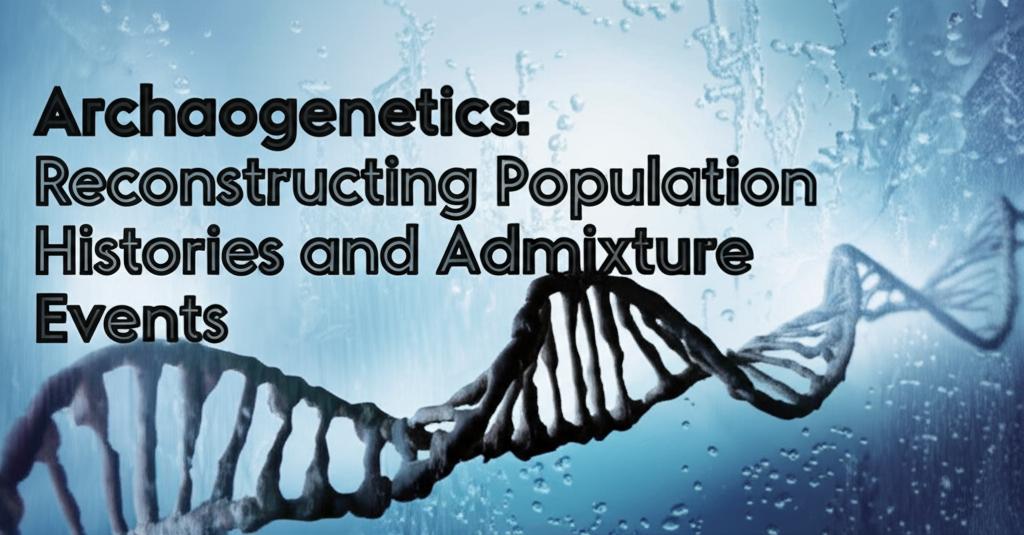Archaeogenetics leverages the power of molecular genetics to unlock secrets held within ancient DNA (aDNA), painting a vivid picture of our past. This rapidly evolving field combines techniques from genetics, archaeology, and anthropology to explore the genetic makeup of long-gone populations, tracing their origins, migrations, and interactions across millennia. By analyzing genetic material extracted from ancient remains like bones, teeth, and even preserved soft tissues, researchers can reconstruct demographic histories and understand evolutionary processes in unprecedented detail.
The process begins with carefully extracting minute amounts of often degraded aDNA from archaeological specimens. Preserving the integrity of this fragile genetic material and avoiding contamination from modern DNA are significant challenges, especially in warmer climates where DNA degrades faster. Advanced laboratory techniques, including Polymerase Chain Reaction (PCR) and particularly Next-Generation Sequencing (NGS) or massive parallel sequencing, allow scientists to amplify and sequence these fragmented DNA segments. Sophisticated bioinformatics tools are then used to piece together genomes, compare them to both ancient and modern populations, and interpret the data.
One of the primary applications of archaeogenetics is reconstructing population histories. By comparing aDNA from different time periods and locations, researchers can track the movements of people across landscapes. For instance, studies in Europe have famously revealed major population turnovers. Analysis of Mesolithic hunter-gatherers (WHG), early Neolithic farmers arriving from Anatolia (EEF), and later Bronze Age migrations from the Pontic-Caspian steppe (WSH) has reshaped our understanding of European prehistory. These studies show how different ancestral groups contributed to the genetic makeup of modern Europeans, with varying degrees of mixing in different regions. Similarly, recent studies in southern Africa have shown remarkable long-term genetic continuity over 9,000 years in some locations, contrasting sharply with the frequent population replacements seen elsewhere. Work in East Asia is also illuminating the complex Cprehistory of populations there, identifying distinct ancestral sources and migrations shaping modern groups like the Han Chinese.
Archaeogenetics excels at identifying admixture events – episodes where genetically distinct populations met and interbred. This provides direct evidence for interactions that may or may not be visible in the archaeological record. Landmark discoveries include quantifying the Neanderthal and Denisovan ancestry present in modern non-African populations, confirming interbreeding events as early Homo sapiens expanded out of Africa. Studies have dated the main Neanderthal admixture event shared by non-Africans to roughly 45,000-49,000 years ago. Further research reveals multiple, complex admixture events with different archaic hominin groups, particularly in Island Southeast Asia and Sahul (New Guinea and Australia). Within human history, archaeogenetics has detailed the gradual mixing of migrating farmers with local hunter-gatherer populations during the Neolithic period across Europe and elsewhere, showing regional variations in this process. It has also traced later movements, such as the spread of ancestry linked to the Bell Beaker and Corded Ware cultures in Bronze Age Europe, migrations during the Roman and post-Roman periods (like the Anglo-Saxon migrations to Britain), and the genetic impact of North African populations in Southern Europe, particularly Iberia and Italy, linked to events from the Roman era through the early Middle Ages. Recent advancements, like the Twigstats method focusing on recent genealogical connections, offer even higher resolution for detecting subtle admixture events between closely related groups.
Beyond tracing human ancestry and migration, archaeogenetics sheds light on the domestication history of plants and animals, identifying wild ancestors and tracking the spread of agriculture. It also allows researchers to reconstruct the genomes of ancient pathogens, like the bacteria responsible for plague or tuberculosis, helping us understand the evolution of infectious diseases and their impact on human populations throughout history, including how past pandemics may have shaped human immunity genes.
The field continues to advance rapidly, with an exponential increase in ancient genome data being generated worldwide. While Europe has been a major focus, research is expanding globally. Studies are increasingly moving from continent-wide sweeps to high-resolution regional and site-specific analyses, offering detailed insights into local population dynamics, social structures, and even family relationships in the past. Archaeogenetics provides a powerful lens, continually refining and sometimes revolutionizing our understanding of the complex tapestry of human history, migration, and evolution.

